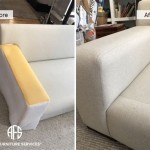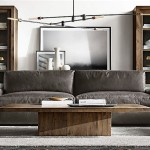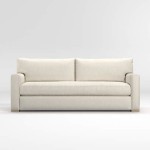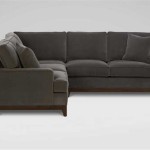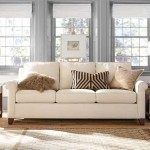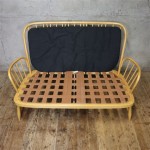How Long Does a Genuine Leather Sofa Last?
Investing in a genuine leather sofa is a significant decision. Consumers naturally seek furniture that offers both style and longevity. Understanding the factors influencing the lifespan of a genuine leather sofa can empower informed purchasing decisions and ensure long-term satisfaction.
The lifespan of a genuine leather sofa isn't a fixed number. Rather, it's a range influenced by a complex interplay of factors, including the quality of the leather, the construction techniques employed, the frequency and type of use, and the ongoing care and maintenance the sofa receives. While some leather sofas might show signs of wear after a decade, others, with meticulous care, can last for generations.
Leather Quality: The Foundation of Longevity
The type and quality of leather used significantly impact a sofa's lifespan. Full-grain leather, derived from the topmost layer of the hide, retains its natural markings and strength, making it the most durable and desirable option. Top-grain leather, while also sourced from the top layer, undergoes sanding and finishing to create a uniform appearance, sacrificing some durability compared to full-grain. Split-grain leather, created from lower layers of the hide, is less durable and more susceptible to wear and tear. Bonded leather, a combination of leather scraps and synthetic materials, offers the least durability.
Beyond the type of leather, the tanning process also plays a crucial role. Vegetable-tanned leather, a traditional method using natural tannins, ages gracefully, developing a rich patina over time. Chrome-tanned leather, a more contemporary process using chromium salts, produces softer, more pliable leather, but may not be as resistant to wear and tear as vegetable-tanned options.
Construction and Frame: The Supporting Structure
A robust frame is essential for a leather sofa's longevity. Hardwood frames, particularly those constructed from kiln-dried hardwood like maple or oak, offer superior strength and stability. Avoid frames made from particleboard or softwoods, as these materials are prone to warping and breakage over time. Examine the joinery techniques; mortise and tenon or dowel joints are generally stronger and more durable than staples or nails.
The quality of the suspension system also contributes to the sofa's lifespan. Eight-way hand-tied springs offer the highest level of support and comfort, followed by sinuous springs. Webbing or other less robust suspension systems may sag or break down more quickly, impacting the overall lifespan of the sofa.
Care and Maintenance: Preserving the Investment
Even the highest quality leather sofa requires regular care and maintenance to maximize its lifespan. Regular dusting and vacuuming prevent dirt and debris from accumulating in the crevices and causing abrasion. Avoid placing the sofa in direct sunlight, as prolonged exposure can cause the leather to fade and dry out. Conditioning the leather periodically with a leather-specific conditioner helps maintain its suppleness and prevents cracking.
Addressing spills and stains promptly is crucial. Blot spills immediately with a clean, dry cloth, avoiding rubbing. For stubborn stains, consult a professional leather cleaner to avoid damaging the material. Rotate cushions regularly to ensure even wear and prevent depressions from forming.
Usage Patterns: Impact on Wear and Tear
The frequency and manner in which a sofa is used directly impact its lifespan. High-traffic areas and families with children or pets will naturally experience more wear and tear on their leather furniture. Protective measures, such as throws or slipcovers, can help minimize wear in high-use areas. Choosing a leather type and color that complements the lifestyle and usage patterns can also contribute to the sofa's longevity. For instance, darker colors and more textured leathers may better conceal minor scratches and scuffs compared to lighter, smoother leathers.
Environmental Factors: Considering Climate and Conditions
Environmental factors, such as humidity and temperature, can also influence a leather sofa's lifespan. Excessive humidity can promote mold and mildew growth, while extreme dryness can cause the leather to crack and become brittle. Maintaining a consistent indoor climate can help preserve the leather’s integrity. Avoid placing leather furniture near heating vents or fireplaces, as the direct heat can dry out the leather.
Understanding the interplay of these factors provides a comprehensive perspective on the potential lifespan of a genuine leather sofa. While a well-made, well-maintained leather sofa can last for many years, consumers should consider their specific needs and circumstances when making a purchase.

How Long A Leather Couch Should Last Reclaimed Spring Tx

How Long Does A Leather Sofa Last

How Long Will Genuine Leather Last

Genuine Leather Couches South All You Need To Know

Genuine Leather Couches South All You Need To Know

Genuine Leather Couches South All You Need To Know

Genuine Leather Couches South All You Need To Know

Genuine Leather Couches South All You Need To Know

Genuine Leather Ideas Advice On Modern Living

Genuine Leather Couches South All You Need To Know

